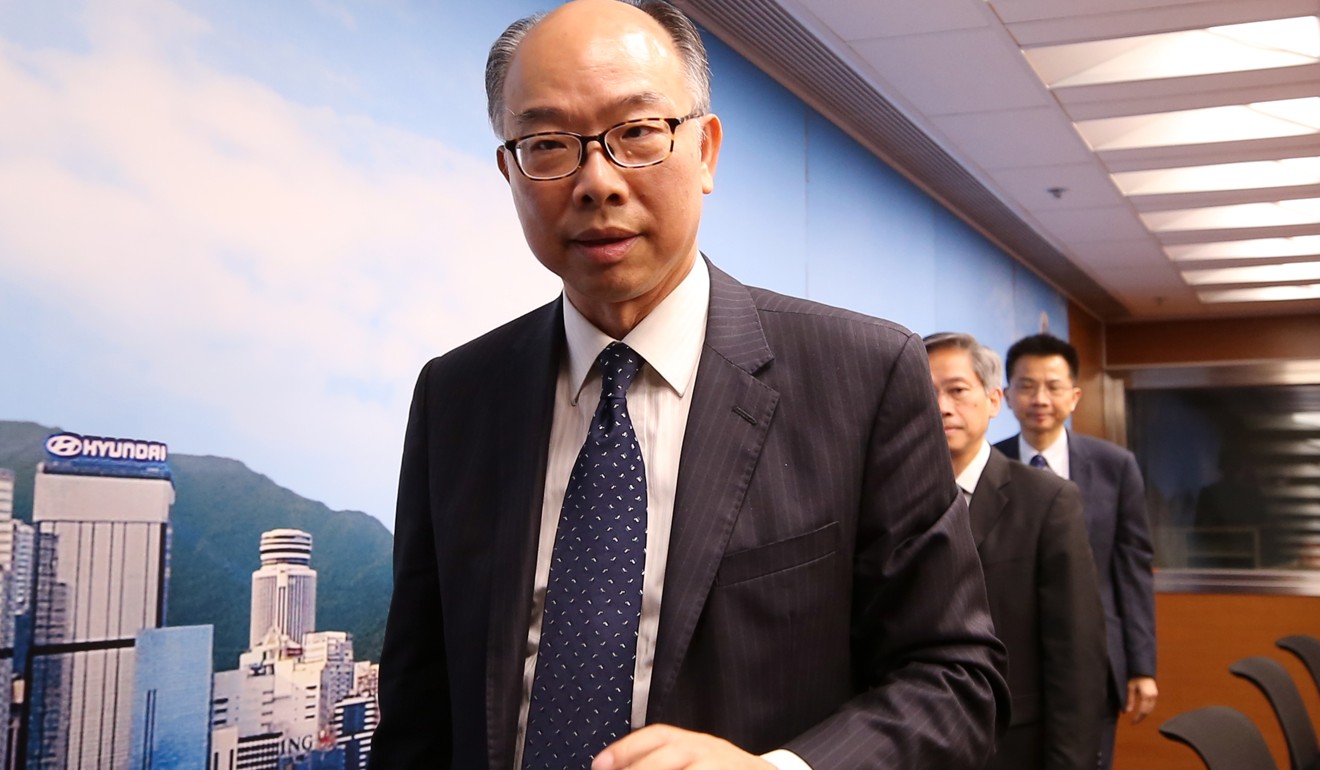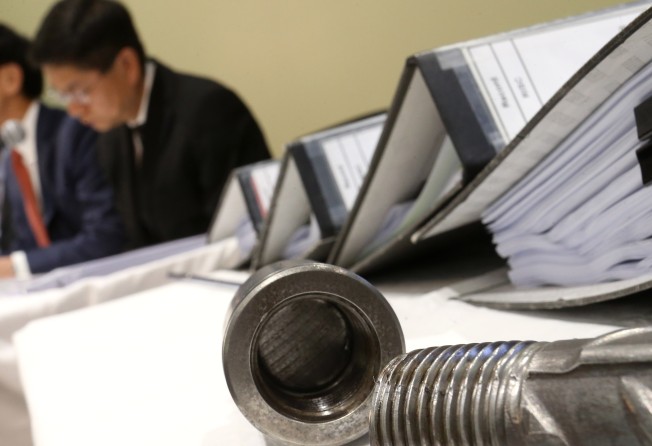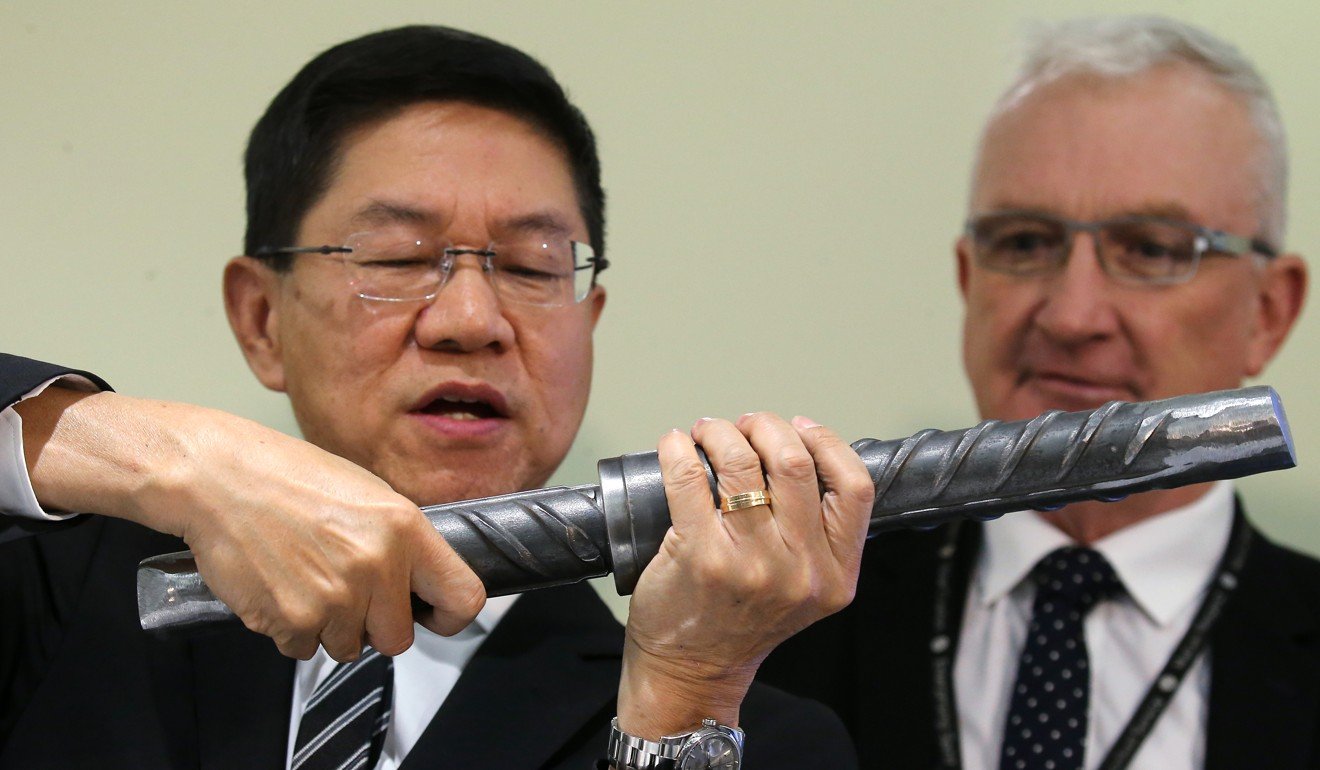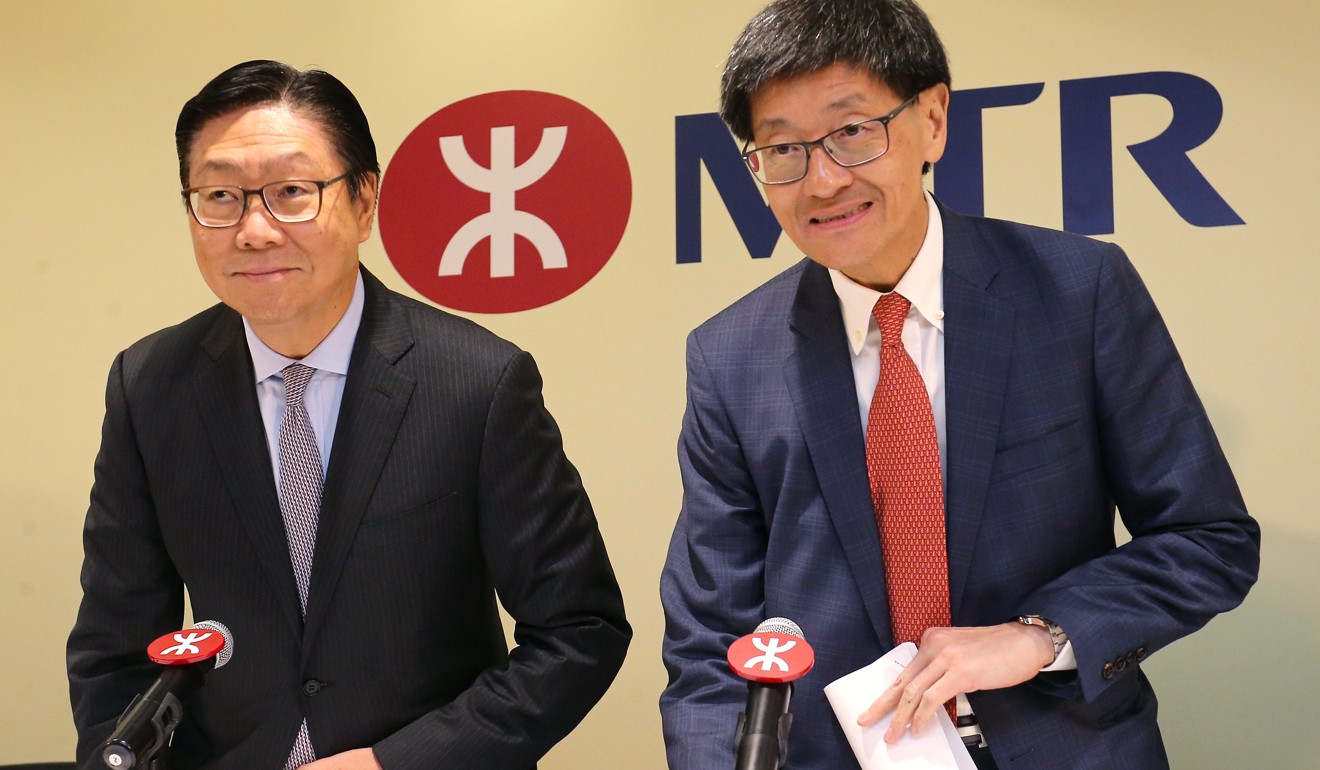
Hong Kong MTR’s HK$97.1 billion link scandal: consequences, loopholes and solutions
With senior managers sent packing, the spotlight is now on how staff and projects have been managed at the city’s rail giant

The sudden departure of several top executives at the MTR Corporation on Tuesday over a construction scandal in Hong Kong’s most expensive rail project has rocked public confidence and shocked the city’s engineering sector.
The government, which owns 75 per cent of the MTR Corp, said on Tuesday it found “huge discrepancies” in two reports on the HK$97.1 billion (US$12 billion) Sha Tin-Central line submitted by the rail giant in June and July.

Transport minister Frank Chan Fan said he asked the board to “remove” those in charge of the project, leading to four immediate departures and the early exit of the company’s CEO.
The MTR Corp will reveal its interim results on Thursday afternoon.
1. What is the scandal about?
News that workers had cut corners on the work at the expanded Hung Hom station of the Sha Tin-Central link first surfaced in May.
Media reports accused a contractor of shoddy work in which steel bars were cut short to make it seem as though they had been properly screwed into couplers. Leighton Contractors (Asia) was responsible for building the platforms in question, but it has so far not publicly responded to allegations.

The MTR Corp then confirmed that between August and December 2015, it identified five instances where steel bars had indeed been cut short.
As the controversy unfolded, lawmaker and former rail boss Michael Tien Puk-sun cited a source saying 5,000 steel bars were faulty, instead of fewer than 25 as asserted by then MTR Corp projects director Philco Wong Nai-keung.

Jason Poon Chuk-hung, director of another subcontractor China Technology Corporation, which was responsible for pouring concrete over the steel bars, said substandard work on the project could be far more widespread than what the rail giant had admitted.
In June, Chief Executive Carrie Lam Cheng Yuet-ngor launched an independent investigation into the scandal. The MTR Corp submitted two reports to the government in June and July. But authorities found that what the reports said contradicted each other.
2. What discrepancies were found by the government in the MTR Corp's reports?
According to the report in June, work on the diaphragm walls supporting the platform at the site was done in accordance with the approved design, and 23,500 couplers were installed. Inspectors from the contractors and the MTR Corp signed off on the records.
But in July, the rail giant submitted drawings showing the design of the east diaphragm wall was modified without approval from the Buildings Department. The wall was built with 2,000 fewer couplers.

It was also discovered that the MTR Corp only used the approved design in two areas of the platform while in about 20 areas, the revised design was applied due to difficulties in connecting steel bars and couplers.
The government also pointed out that the installation of couplers took place between May 2015 and 2016 but the MTR Corp’s inspector signed off on the documents in 2017 after the concrete had been poured.
MTR Corp chairman Frederick Ma Si-hang said the board of directors was unaware of the inaccuracies.
CEO Lincoln Leong Kwok-kuen said Leighton had decided to deviate from the approved design. He said the new design was better but admitted that it should not be an excuse for not following procedures.
3. What are the consequences of the government's revelation?
The scandal prompted Ma to resign but he said the government had asked him to stay on until a new CEO was hired in six to nine months. As for Leong, who renewed his two-year contract in February, he would step down earlier than expected once a successor is appointed.
Projects director Philco Wong resigned with immediate effect, while three other general managers of the project, Lee Tsz-man, Jason Wong Chi-ching and Aidan Rooney, also left.
People want heads to roll, but there are different levels of accountability
The city’s leader Carrie Lam Cheng Yuet-ngor said Wong should leave as the engineering team was responsible for providing inaccurate information. She said Leong’s departure meant he was held accountable for the discrepancies.
But Lam said the board of directors, including Ma, had been kept in the dark, so they should stay.
“People want heads to roll, but there are different levels of accountability,” Lam said on Wednesday.
She also cited similar reasons to defend Secretary for Transport and Housing Frank Chan Fan.
Leong and the four who left had been promoted to their positions in 2014, when ex-chief executive Jay Walder and former projects director Chew Tai-chong resigned after an internal investigation into the delay and cost overrun of the HK$84.4 billion high-speed cross-border rail to Guangzhou.
4. What are the loopholes in the existing monitoring system?
On a radio programme on Wednesday, Democratic Party lawmaker Lam Cheuk-ting, deputy chairman of the Legislative Council’s transport panel, said the existing mechanism mainly relied on signoffs made by professionals because this was taken to mean they were held accountable and had observed proper ethics.
“But monitoring through documents is dysfunctional,” Lam said. He alleged that the documents were falsified.
But monitoring through documents is dysfunctional
Lawmaker Edward Lau Kwok-fan, of the Democratic Alliance for the Betterment and Progress of Hong Kong, echoed Lam’s remarks, adding that the government put too much faith in paperwork. “In fact, the government relied too much on its confidence in the MTR Corp,” he said.
Jason Poon Chuk-hung, managing director of subcontractor China Technology Corp, questioned whether Ma had received inadequate information and relied too heavily on his colleagues to be honest and proactive.
“This would be a structural failure. That means, if people under him do not talk [about the issues], then he wouldn’t know,” he said.
5. So what happens now?
On Wednesday evening, Lam announced the government had appointed three former officials as advisers to strengthen management of the troubled project.
The trio are former director of the Civil Engineering and Development Department Lau Ching-kwong, former director of the Buildings Department Hui Siu-wai and Wong Hok-ning, former head of the Geotechnical Engineering Office.
On Thursday morning, Lau said the best way to get to the root of the problem would be to break open the concrete for checks.
On the Wednesday radio programme, both Lam Cheuk-ting and Edward Lau suggested that more on-site inspectors should be involved in quality checks.
Lam also proposed that the CEO of the MTR Corp should supervise the quality of building works with a separate team, so staff at lower levels could easily inform them of any issues.
